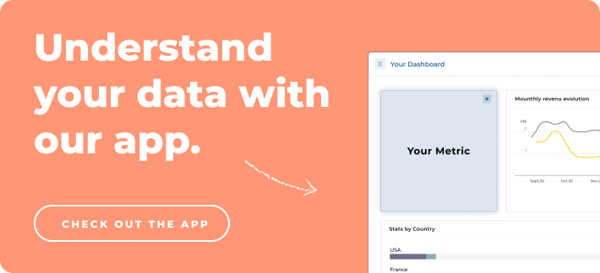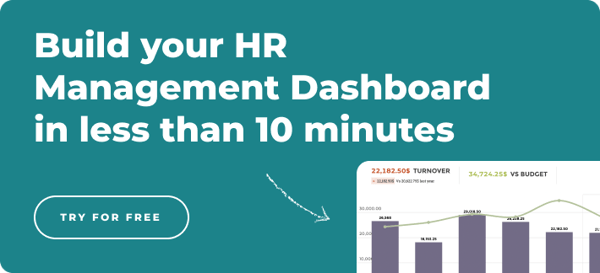
With an expansion of service offerings and hospitality chain expansions, hospitality managers now need data more than ever to make cautious but effective decisions. What if you could drive data-backed decisions at every level of the hospitality value chain without having to train managers on data science?
Is there a way to quickly introduce the benefits of advanced business intelligence (BI) without going into its befuddling learning curve?
Enter Data Storytelling
Consisting of telling a story with data, data storytelling is possibly the fastest and easiest approach to understanding a dataset’s underlying insights and acting on them.
For thousands of years now, stories have proved to be a more efficient way of driving knowledge and aiding memory than a simplistic transfer of information.
Did you know that as much as 65% of all human interactions take the form of storytelling? So, it makes sense that your hotel managers would be able to glean a more accurate and holistic picture of the business situation when they get a coherent story, rather than if they get barebones facts or complex data points on a hotel business analytics dashboard.
Imagine a hotelier juggling multiple departments in the course of their daily operations. Or, a restaurant manager working with various suppliers and distributors to support online deliveries during a pandemic. They would find it simpler to study a data story and act on its insights instead of going through piles of spreadsheets to find that one data point that would make a difference.
Traditional spreadsheets and even BI tools are meant for in-depth exploration, requiring expertise and time. In contrast, hotels and restaurants need a way to equip frontline employees with data insights close to near-real-time.
A data storytelling app (powered by hotel business analytics at the backend) is your secret weapon to address this, unlocking myriad benefits along the way.
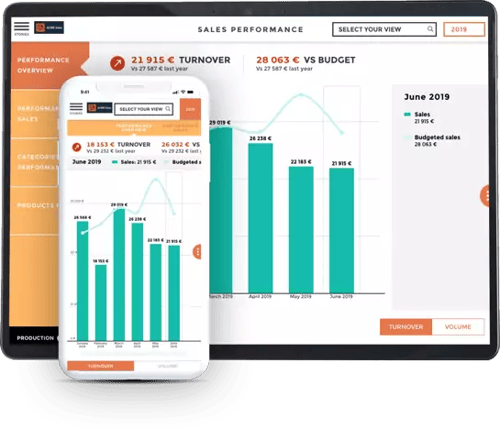
Hospitality software: 3 Benefits to Expect When You Use a Data Storytelling App
Hospitality data analytics has been among the top five technology investments in the industry for a while now, mostly limited to guest experiences.
“Hotels continue to place more emphasis on improving guest experiences than increasing efficiency. When asked to identify top insights being gathered and analyzed via the hotel network, the premiere focus for data is all about understanding the guest,” finds an industry report from Alcatel-Lucent.
This is all well and good for long-term planning but stutters when managers want to make quick, short-term decisions that boost profitability.
A data storytelling app unlocks a much bigger world of potential, reducing management efforts, making ops more efficient, and enabling revenue growth. You don’t need a data science professional to unearth actionable insights and realize the following benefits:
1. Create a single source of truth to save thousands of person-hours every year
If you look at a typical hotel technology stack, its sheer complexity is overwhelming. There are property management systems (PMS), CRM tools run by marketing, channel management for distribution, a central reservation system, and this is without going into the F&B side of it!
When a 2018 survey conducted by Alcatel-Lucent asked hoteliers about their planned investments, a diverse array of technologies came up, including mobile, IoT, cloud, location-based services, omnichannel, and AI.
All of this multiplied by the number of sites on your roster leads to a KPI landscape that is almost too sprawling to manage. No wonder, then, hoteliers have to continually switch between sites to maintain operations at an optimum. And the inability to do so, for example, during a pandemic, results in irreparable losses.
A data storytelling app cuts down this fragmentation in hospitality’s digital landscape.
Multiple hospitality data analytics sources can feed into a single tool, removing the need to juggle between different interfaces or physical sites. The tool can create a complete “data story” for the hotelier by extracting information from a holistic set of sources.
It also helps in comparative analysis. With so many sites, brands, and segments in one chain, you need an easy way to slice-and-dice data to answer your most pressing questions. Which site is flagging in performance? Which marketing channels worked in June but aren’t working in November? What’s changed?
A data storytelling app allows easy comparison between key variables to reveal important information.
Technically, you should achieve similar results with a spreadsheet, but the process is so effort-intensive that it is almost not worth it. One of our customers at Toucan Toco, Elior Group (a multinational food services company), found it was spending one avoidable hour every week on admin tasks.
To put that into a longer-term perspective: That’s 1-hour x 52 weeks x 300 site managers, which equals a loss of 15,600 person-hours every year!
Our data storytelling app freed up this time, potentially routing efforts towards actual revenue generation.
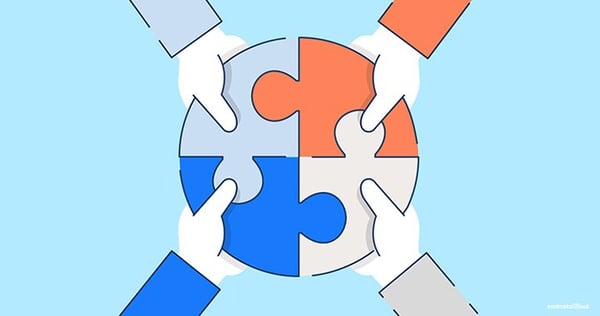
2. Optimize resource allocation by data-powering your managers on the field
It’s no use locking data up in an ivory tower when managers on the frontlines could use it for small but significant efficiency gains by optimally utilizing your resources.
A data storytelling app helps in data democratization so that your managers have access to decision-making aids from the get-go. No more “data literacy preferred” on your job ads, no more mandatory (and costly) BI training, no more top-down decisions driven by elusive strategic heads.
Data democratization via an easy-to-use mobile app lets you capitalize on your site managers, minimize waste, and improve operations.
It also makes it easier to mobilize resources for timely action.
Let’s say your data forecasts a sharp dip in food and beverage (F&B) demand right after the holiday season. A data storytelling app means that you don’t need a senior business leader to study reports, explore the trends in detail, take a call, and relay the decision to the property’s F&B manager. Continuous activity monitoring and forecasting let you scale your resources up or scale down on time, minimizing waste and ensuring that you don’t miss out on an opportunity.
This is exactly why F&B and travel retail leader, Areas, was able to achieve a 215% ROI by saving on workforce and F&B costs.
Remember, department heads and team leaders are the people with the most decision-making capacity in hospitality, where situations are dynamic and opportunities are time-bound. A complex analysis process will only delay the journey from raw data points to actionable insights, with most of the time wasted in hospitality data analytics exploration.
In comparison, a storytelling app eliminates the intermediate steps in data analysis. It directly equips your managers with what they need to know, to do what they do best!
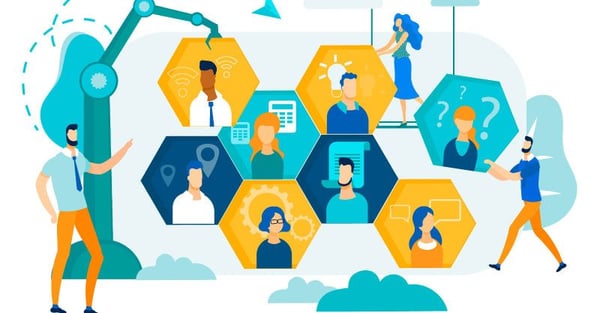
3. Set clear benchmarks for targeted performance improvements
A major problem with BI dashboards is that you cannot often see the forest for the trees.
The dashboard is populated with so many datasets and filtering parameters – sacrificing context for comprehensiveness – that it becomes difficult for a manager to act on it. They would either only skim through and make a “guesstimate” or would arrive at an incorrect conclusion, owing to the fact that they are not data scientists.
Further, there is no way to collate and contrast data from different properties across a hotel/ Restaurant chain to arrive at customized internal benchmarks.
In comparison, a data storytelling app will highlight individualized KPIs, tracking them over time and across sites to reveal business-focused action items.
Here are a few examples:
- Revenues – View a consolidated summary of revenue per night, revenue per available room (RevPAR), and average daily room rate (ADR). Conduct a margin analysis study, timebound trends, and compare different sites to figure out the ideal room repartition. Match revenue inflow with your marketing mix to invest in the most effective marketing channels.
- F&B profitability – Study F&B-specific KPIs like average spending per seat, average margin per seat or meal, product-wise margin, and demand patterns. This can help F&B managers make smarter decisions around pricing, new product development, product retirement, stock replenishment, and menu composition. A centralized data source across all the restaurants of a hotel chain can make F&B decisions more efficient, avoiding shortage or waste, and boosting return business.
- Resource productivity – Understand how your capital assets and human resources are being put to use. Map hourly employee productivity per brand, segment, or property to detect any gaps in training. Anticipate hiring needs before you face resource scarcity. Study room utilization to identify occupancy trends across sites, reprioritizing them as needed. You can also set dynamic prices based on room demand while also preparing your staff ahead of time.
- Event analysis – Make the most of your event business by studying event-related KPIs (bookings, F&B product margins, service requests, etc.), so you can put together the most optimal event offerings and packages. Compare different properties/sites to scale up event infrastructure only in the most ROI-friendly hotels.
Let the app bring the data. Your managers can bring their specialized domain knowledge (and years of on-ground experience) to act on them the best way possible.
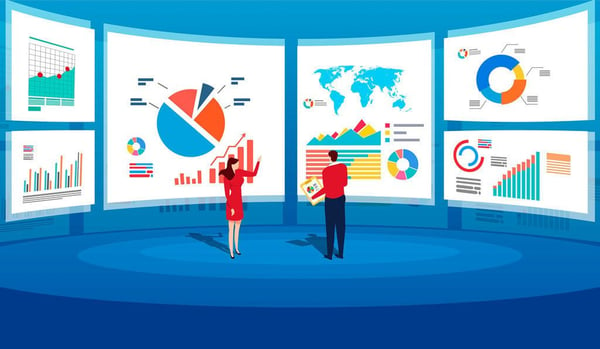
Hospitality software: Leveraging Data Storytelling for the Rebound
As hotels, restaurants, and hospitality services providers regain their growth momentum next year, the focus will be on efficiency and sustained margins. 70% of the industry plans to achieve this by removing variable costs and lowering their fixed expenditure. Data storytelling could be your secret weapon on this journey, maximizing the power of hotel business analytics.
Our analysis of the hospitality segment and conversations with some of the industry’s leaders have shown this issue’s criticality. The sector was thriving until COVID-19, and even the world’s largest chains have had to let go of precious resources in a bid to withstand the tide.
Incremental efficiencies from departmental managers to site supervisors, all the way up to regional heads, could push up margins in unexpected ways, accelerating the rebound.
Ultimately, data storytelling could help hoteliers – and the TTH industry as a whole – bury the disappointments and losses of the past year, find new, untapped opportunities to invigorate the business, and offer customers refreshed and compelling experiences.


